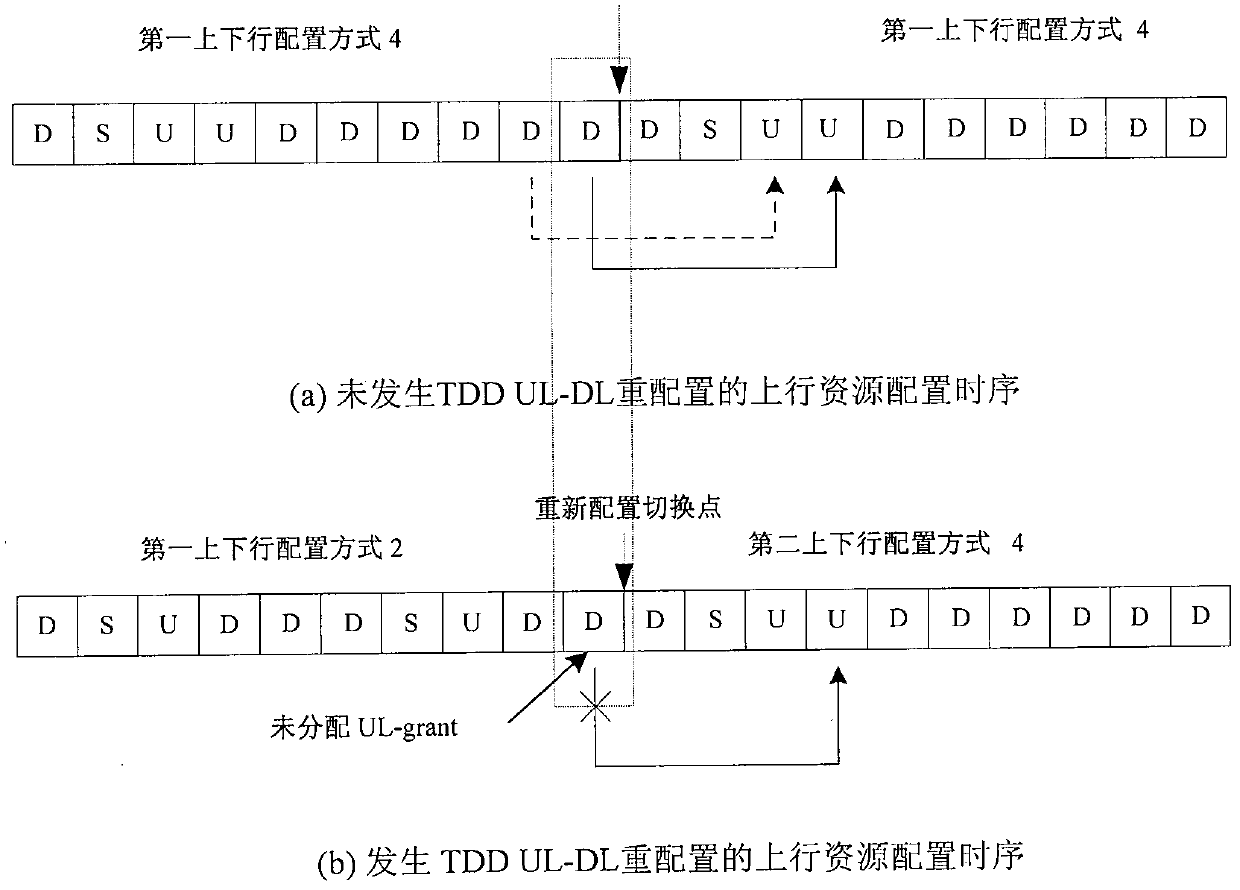Method for resolving conflict of TDD (Time Division Duplex) uplink resource configuration information and HARQ (Hybrid Automatic Repeat Request) acknowledgment message
A technology for reconfiguring messages and configuration methods, which is applied in the direction of error prevention/detection by using the return channel, prevention/detection of errors through diversity reception, etc., and can solve problems such as waste of uplink bandwidth and inability to correctly schedule uplink subframes, etc. Achieve the effects of eliminating waste, saving time and resources, and ensuring performance
- Summary
- Abstract
- Description
- Claims
- Application Information
AI Technical Summary
Problems solved by technology
Method used
Image
Examples
Embodiment Construction
[0038] In the present invention, first define two types of uplink resource allocation conflicts:
[0039] Type I: The uplink resource allocation of the uplink subframe (Physical Uplink Shared CHanneel, PUSCH) of the radio frame changed by TDD reconfiguration is located in the uplink subframe of the previous frame before the change, such as figure 1 shown. The uplink subframes (that is, #8 and #9 uplink subframes) of the previous frame before the change are called conflicting subframes. Specifically, according to the uplink and downlink configuration mode 4 of the second radio frame, the uplink resource allocation of the #2 and #3 uplink subframes of the second radio frame is located in the #8 and #9 uplink subframes of the first radio frame , the #8 and #9 uplink subframes of the first radio frame are called conflicting subframes. Uplink subframes #2 and #3 of the second radio frame are called subframes to be scheduled.
[0040] Type II: The uplink resource allocation of th...
PUM
 Login to View More
Login to View More Abstract
Description
Claims
Application Information
 Login to View More
Login to View More - R&D
- Intellectual Property
- Life Sciences
- Materials
- Tech Scout
- Unparalleled Data Quality
- Higher Quality Content
- 60% Fewer Hallucinations
Browse by: Latest US Patents, China's latest patents, Technical Efficacy Thesaurus, Application Domain, Technology Topic, Popular Technical Reports.
© 2025 PatSnap. All rights reserved.Legal|Privacy policy|Modern Slavery Act Transparency Statement|Sitemap|About US| Contact US: help@patsnap.com



